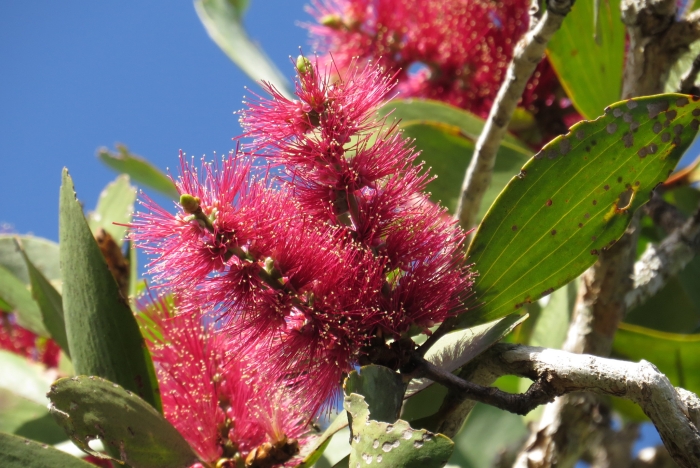Broad-Leaved Paperbark
(Melaleuca viridiflora)
Broad-Leaved Paperbark (Melaleuca viridiflora)
/
/

coenobita
CC BY 4.0















































Estimated Native Range
Summary
The red-flowered form of Melaleuca viridiflora is especially sought after in cultivation for its vibrant color and adaptability. It is used for ornamental planting in tropical and subtropical regions, often in heavy clay soils, and its open canopy structure makes it an excellent host for epiphytes like Dendrobium orchids. It requires medium water and thrives in part shade to full sun, with a preference for medium to slow-draining soils. While generally low-maintenance, it can be susceptible to root rot in poorly drained conditions.CC BY-SA 4.0
Plant Description
- Plant Type: Shrub, Tree
- Height: 20-30 feet
- Width: 15-20 feet
- Growth Rate: Moderate
- Flower Color: Red
- Flowering Season: Summer
- Leaf Retention: Evergreen
Growth Requirements
- Sun: Part Shade, Full Sun
- Water: Medium
- Drainage: Medium, Slow
Common Uses
Bee Garden, Bird Garden, Butterfly Garden, Fragrant, Hummingbird Garden, Low Maintenance
Natural Habitat
Monsoon forests, coastal swamps, and seasonally wet areas in northern Australia and the southern lowlands of New Guinea
Other Names
Common Names: Paperbark Teatree, Niaouli-Tree, Paperbark-Tree, Swamp Paperbark, Swamp Teatree, White Teatree, Coarse-Leaf Paperbark, Broadleaf Paperbark, Broadleaf Teatree, Green-Flower Paperbark
Scientific Names: , Melaleuca viridiflora, Melaleuca viridiflora var. attenuata, Melaleuca cunninghamii var. glabra, Melaleuca leucadendra var. sanguinea, Cajuputi viridiflora, Melaleuca cunninghamii, Melaleuca leucadendra var. latifolia, Melaleuca leucadendra var. viridiflora, Melaleuca sanguinea
GBIF Accepted Name: Melaleuca viridiflora Sol. ex Gaertn.